李江树
1954年生
中国作家协会会员
中国环境文学委员会委员
中国摄影家协会理论委员会委员
奖项:
1985年,报告文学《林莽,浩瀚的林莽》在“国际青年年”中国区征文中获金奖。
1995年,专题摄影《儿童孤独症的拯救者》获全国纪实报道大赛一等奖。
1996年,摄影作品《人民音乐家王洛宾》获“全国新闻人物肖像大赛”铜牌奖。
1999年,摄影作品《画家石鲁》获共和国50年新闻摄影奖并入选20世纪华人
摄影经典作品。
2003年,中篇散文《向北方》获首届全国环境文学一等奖与《中国作家》“好
百年杯”全国散文大赛一等奖。
2007年12月,专题《老北京》获首届“侯登科纪实摄影奖”。同月,评论文章
《中原厚土》获第六届中国文联文艺评论奖一等奖。
2009年 建国60周年之际,入选由《文明》杂志社主办并评选出的“中国60
位杰出纪实摄影家”。
2012年,组照《在路上》获第二届“徐肖冰杯”全国摄影大展“优秀作品奖”。
出版:
散文集:《湿地》、《向北方》
中短篇小说集:《沿着额木尔河的划行》
论文:《终结小脚 ——中国妇女缠足考(李江树撰文、秦军校摄影)
《八道湾的呼吸》——周作人在北京
《莽苍苍》
摄影随感集 :《瞬间的跋涉》、《手感》、
摄影美学:《象征摄影》
摄影评论集:《有狼的风景》
以抢救北京建筑遗产为内容的图文书:《说吧,北京》、《北京画卷》、《老北京》(与罗哲文合著)。
收藏:
2008年5月,摄影作品《茶馆》被西班牙瓦伦西亚现代艺术博物馆收藏。
2004年,《北京·东四七条》等5幅照片被广东美术馆收藏。
Li Jiangshu
Born in 1954
Member of China Writers’ Association
Committee member of China Environmental Literature
Committee member of China Photographer’s Association
Award
Non-fiction novel “Thicket, Vast Thicket”, Gold prize of China ”International Youth Year”
Special photography "the saviors of childhood autism" won the national documentary projects competition first prize.
Photographs of the people's musician Wang Luobin won the" national news portrait competition "bronze award.
Photography "painter Shi Lu" won 50 years of the republic of news photography and classic works in the 20th century Chinese photography.
Medium-length prose "north" won the first prize in the national environmental literature and "Chinese writer" "good one hundred cup" national essay contest.
"Old Beijing" project won the first "Hou Dengke documentary photography".
During the same month, review article "zhongyuan thick soil" was awarded the first prize for the sixth China federation of literary critics award.
60th anniversary of inclusion to the sponsored by "the civilization" magazine voted "60 outstanding documentary photographers in China"
Series of work “on the road” won the second "Xu Xiaobing cup" national photography festival prize of excellent works.
Solo Exhibitions
Essays: "wetland", "north"
ZhongDuanPian stories: "rowing along the E Muer river"
Papers: "the end of Chinese foot-binding women” (article: Li Jiangshu, photograpy: Qin Xiaojun )
“the breath at Badao bay” - zhou zuoren in Beijing
“MangCangCang"
Photography impression set: "instantaneous travel", "feel"
Photography aesthetics: "the symbol of photography"
photographic essays: " wolves in the scenery" ”Speak out, Beijing ", "Beijing landscape", "old Beijing"
Publications
Photography "tea house" collected by the Spanish valencia museum of modern art.
“Beijing, Dongsiqi Street" and so on 5 photographic works collected by the national art gallery of guangdong
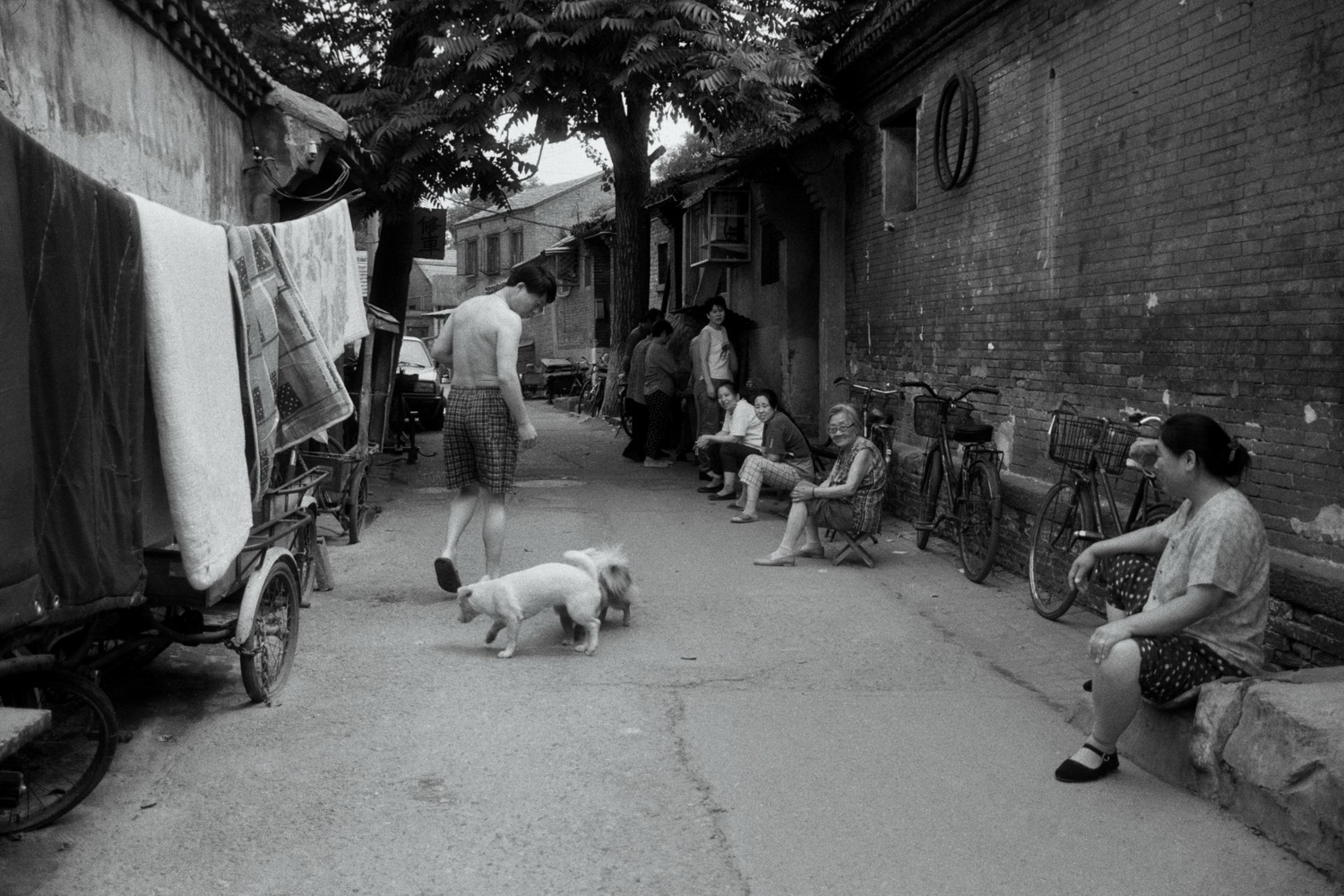
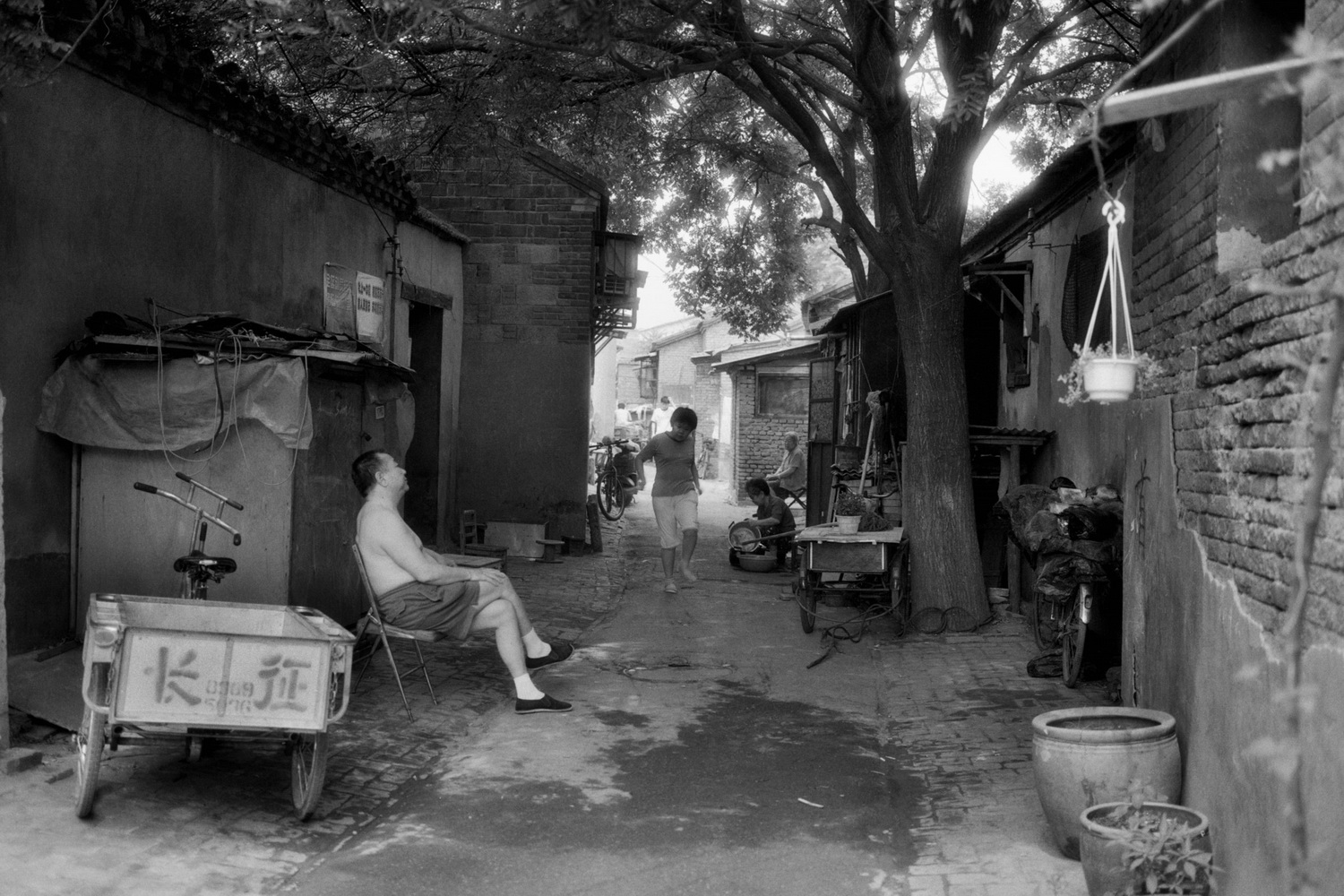
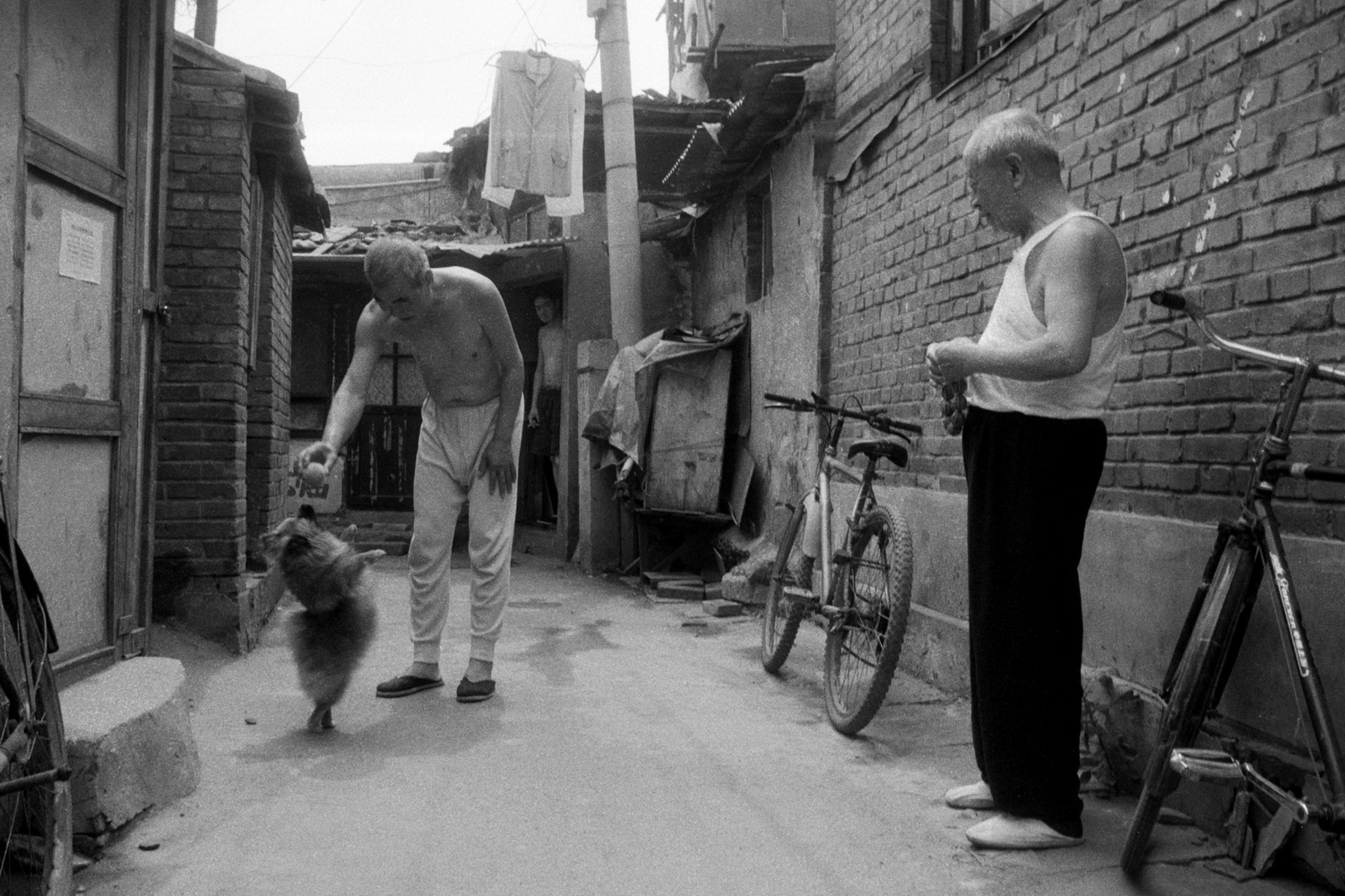
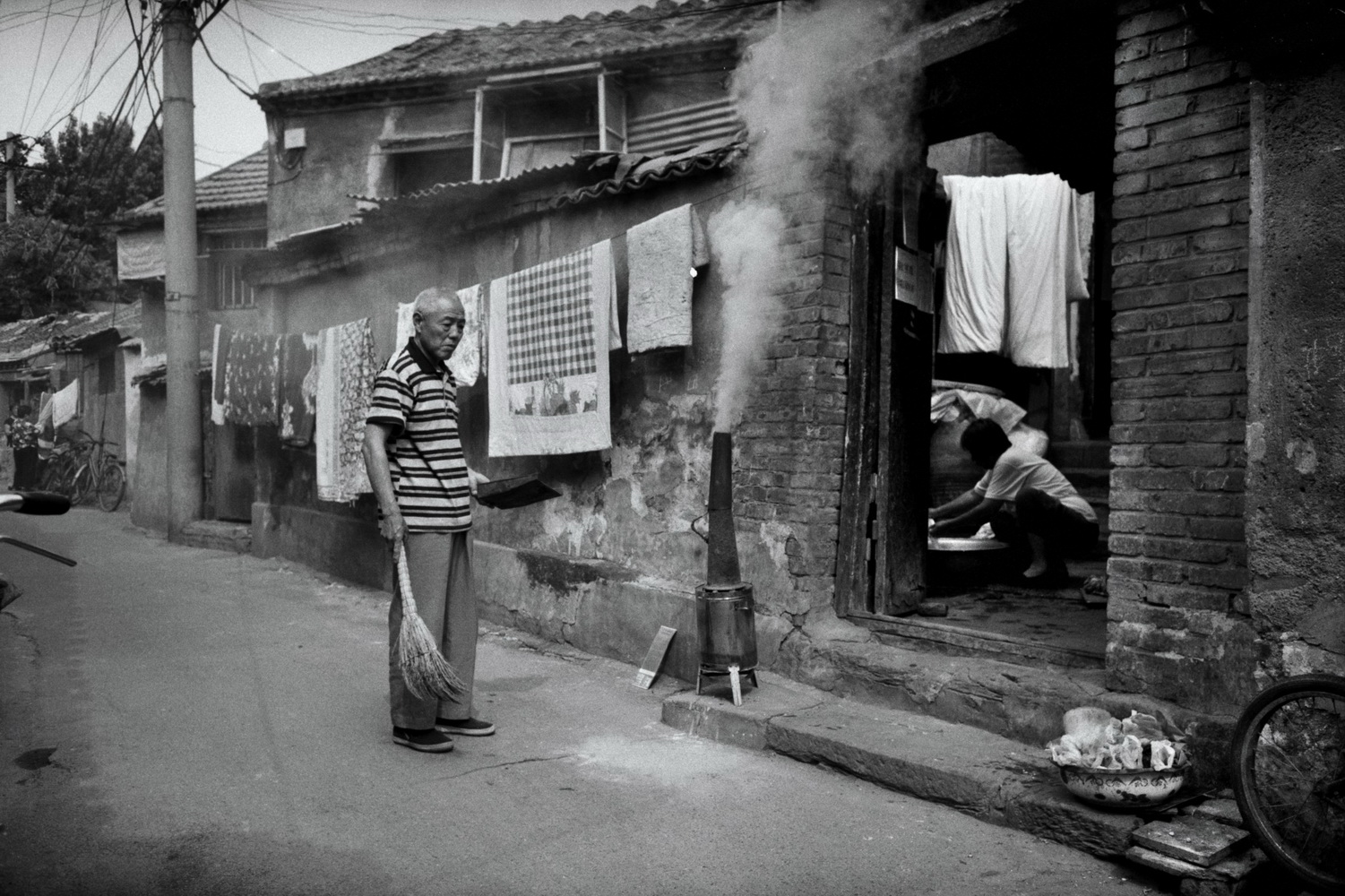
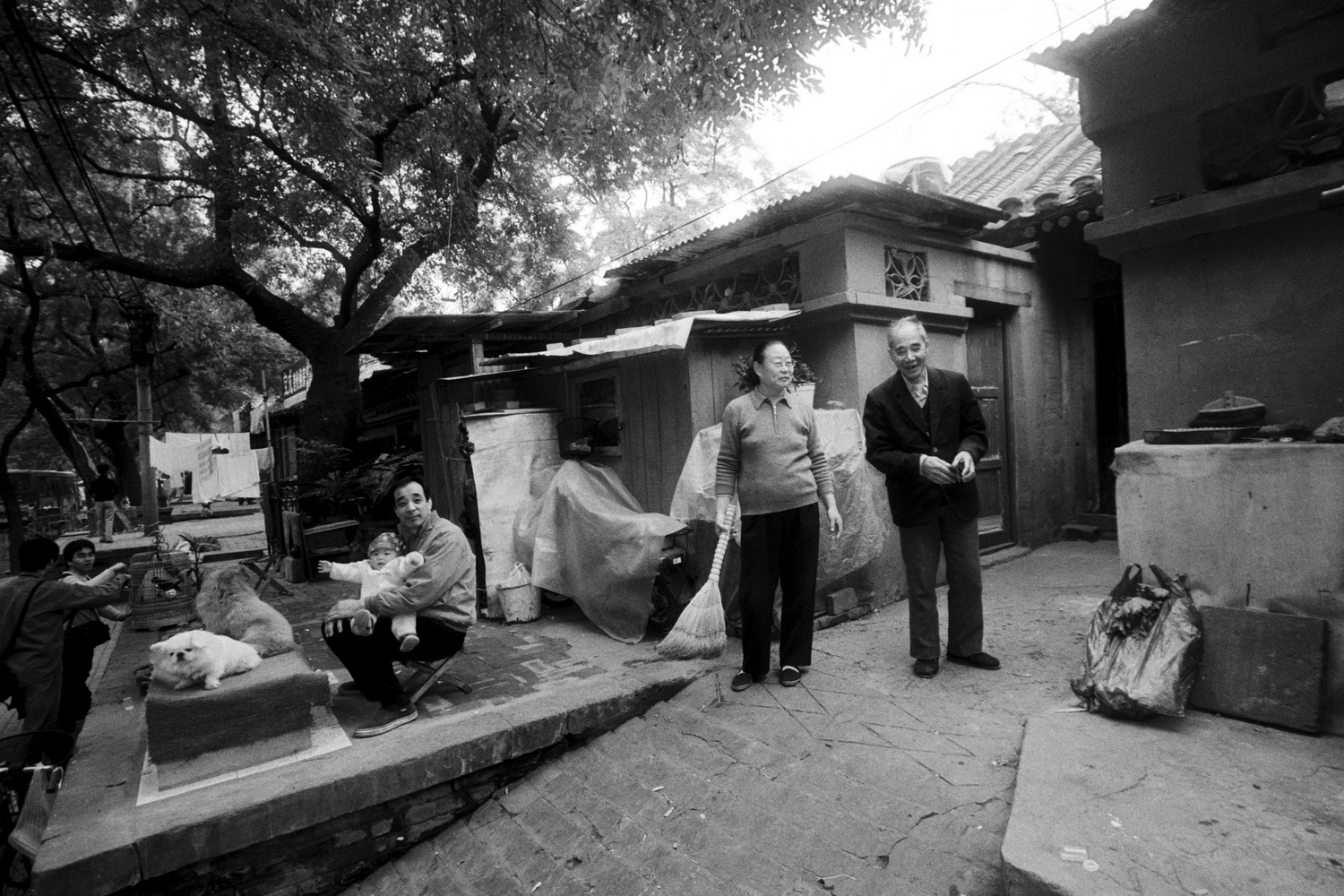

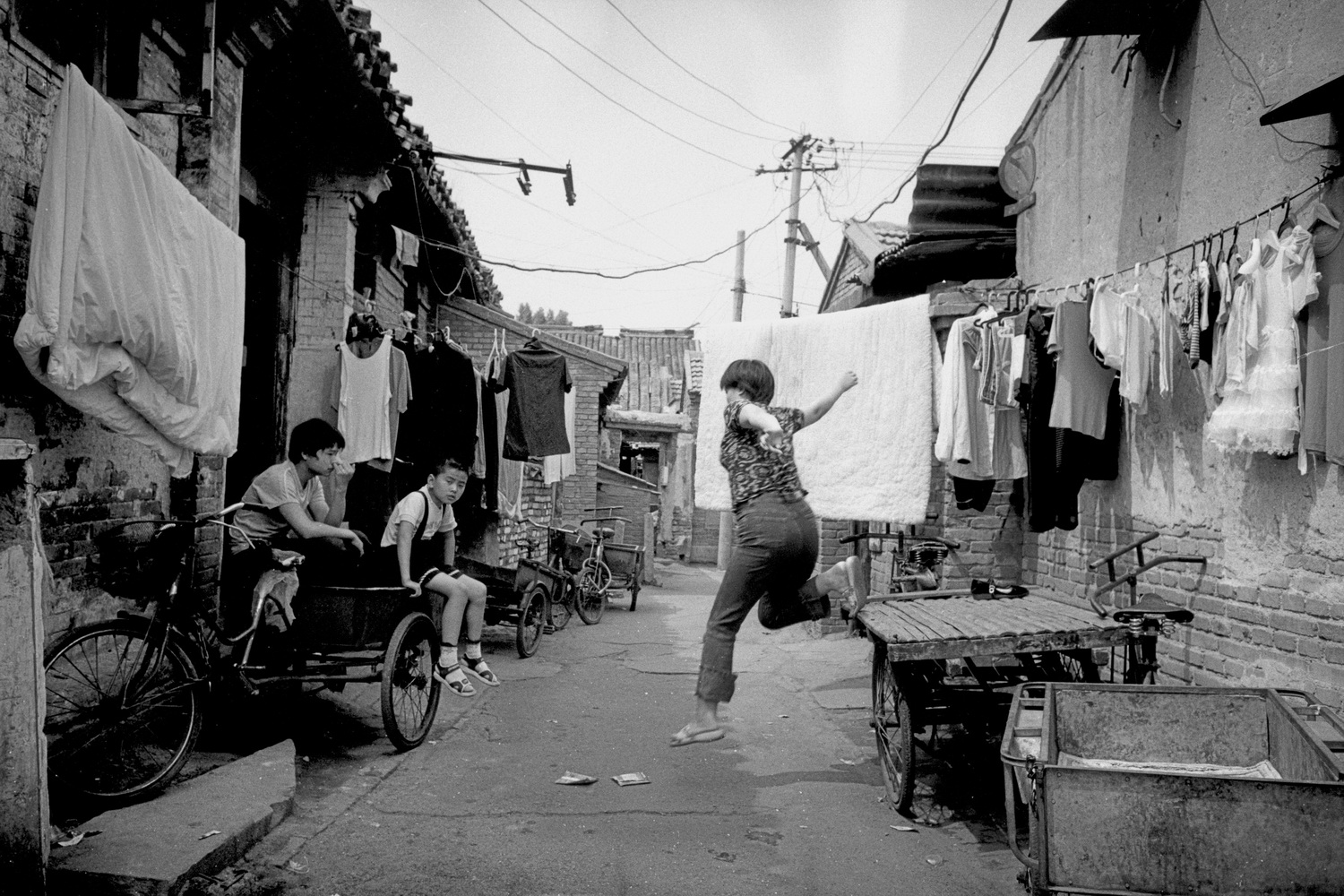
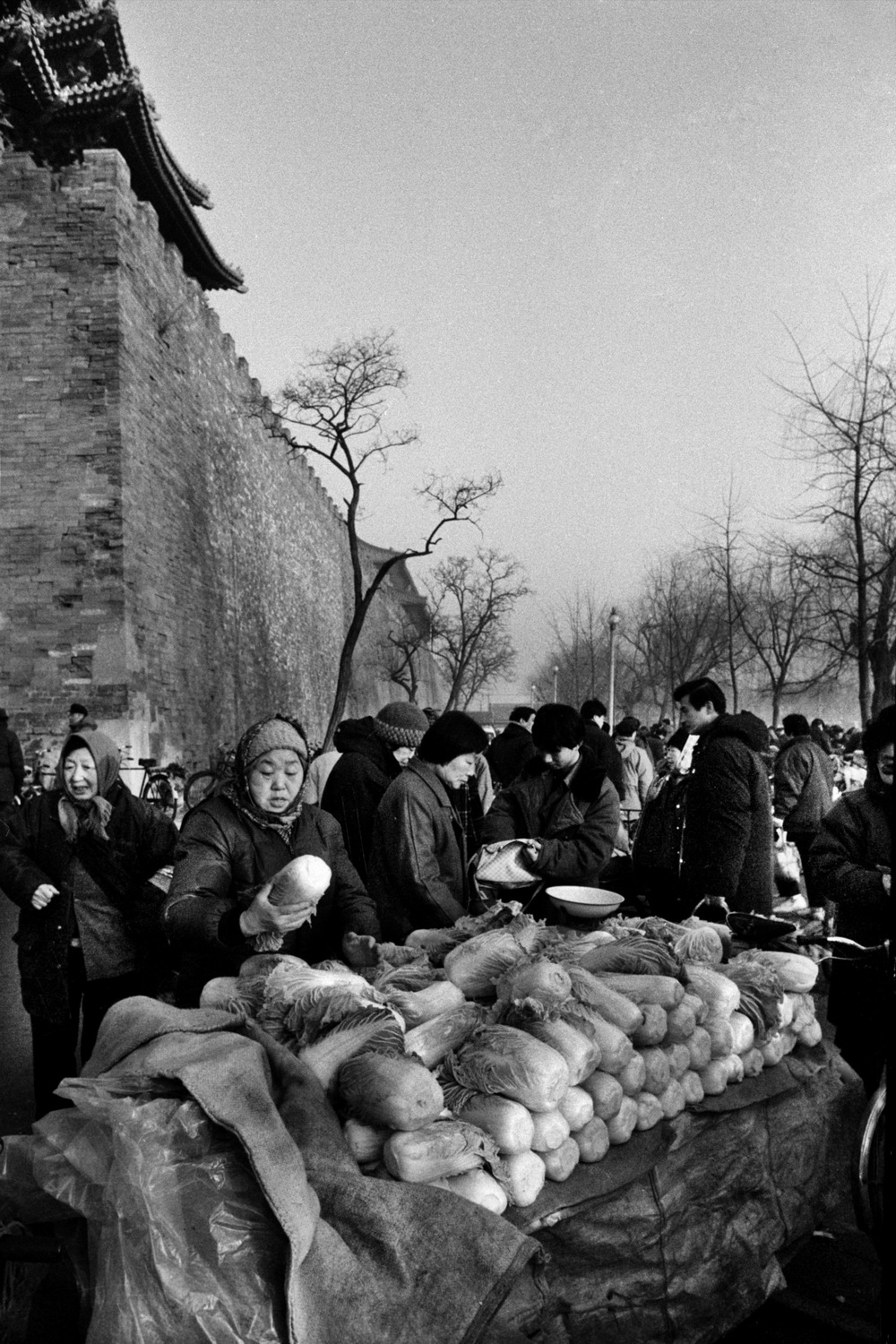
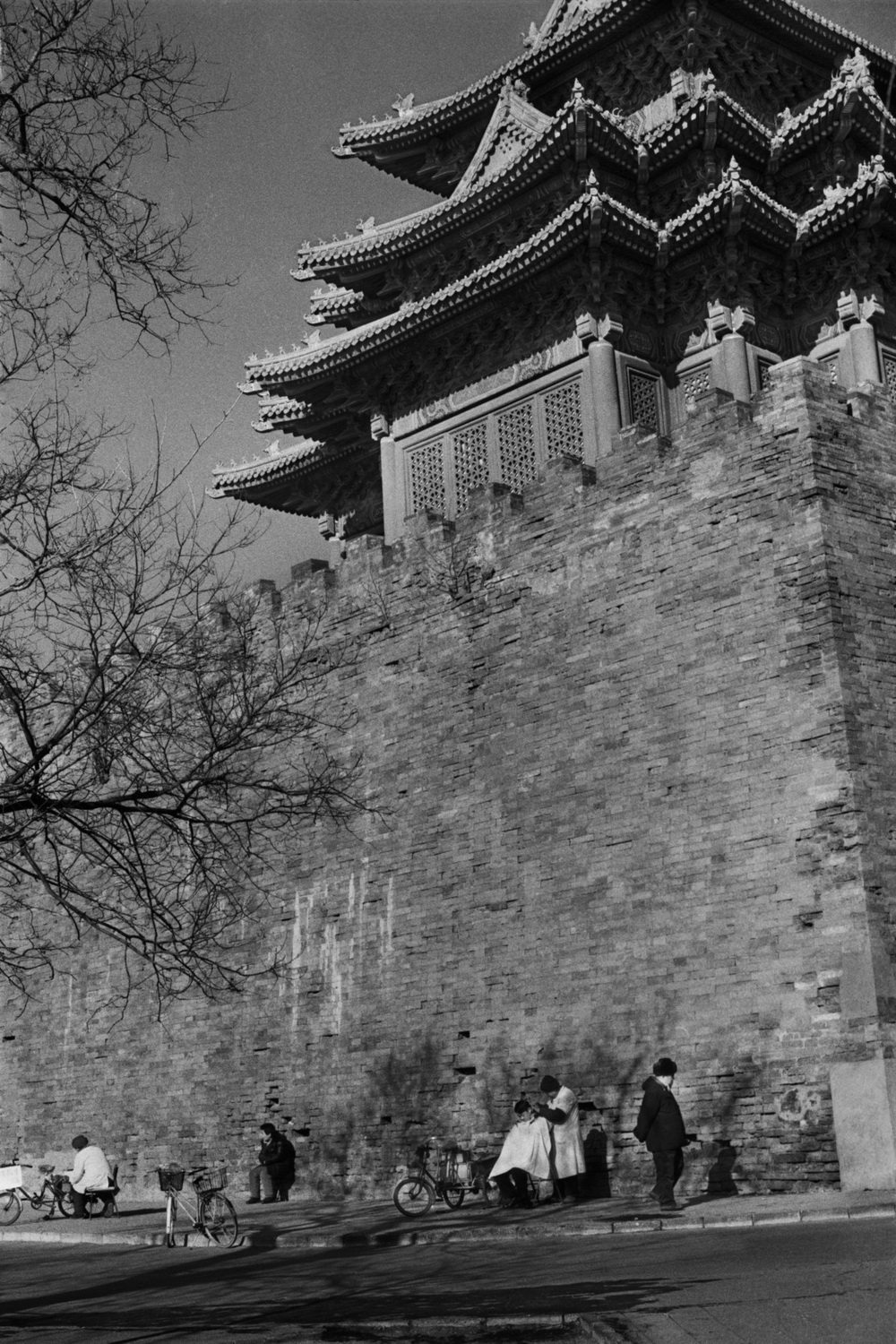
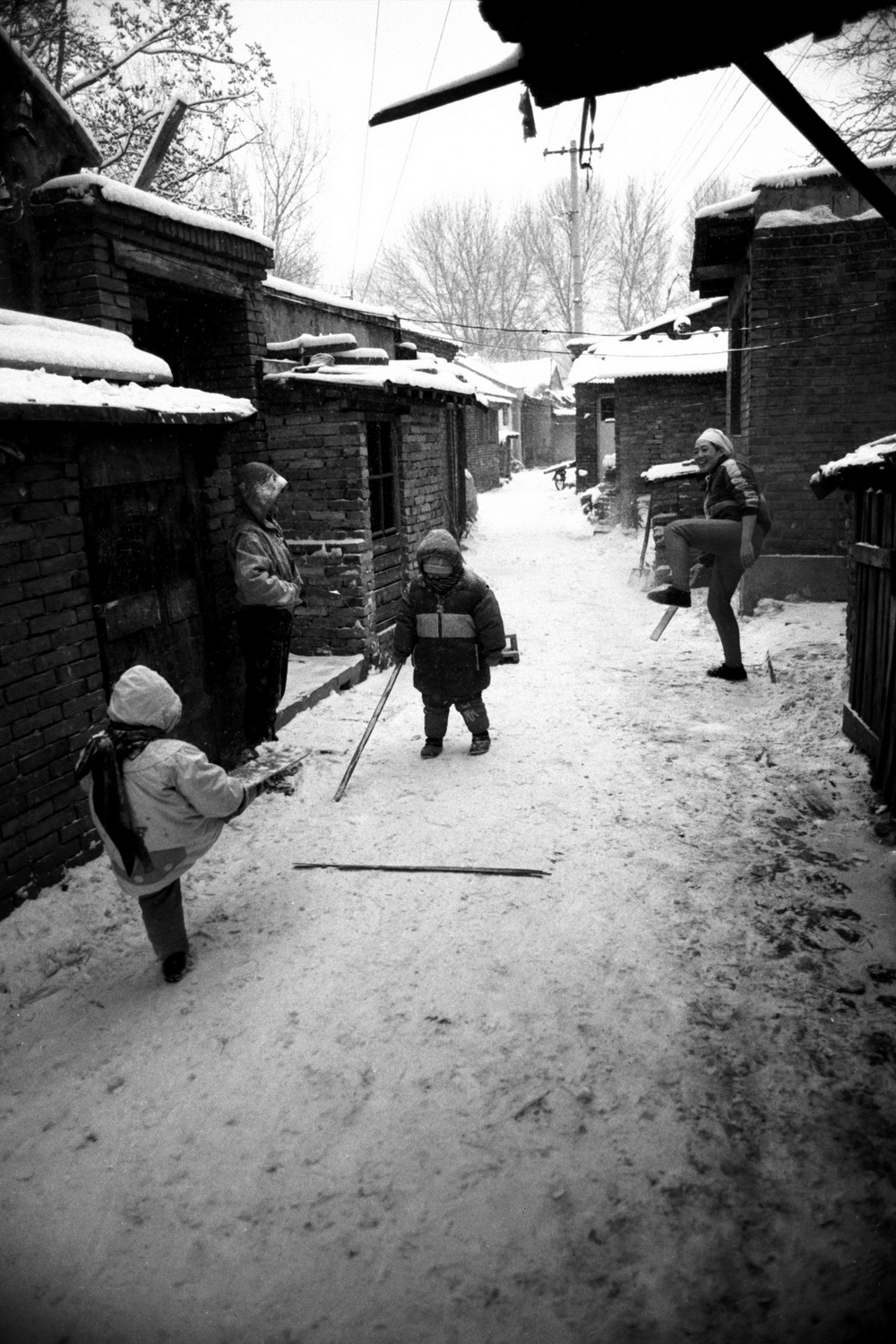
评论节选
III
1954年生
中国作家协会会员
中国环境文学委员会委员
中国摄影家协会理论委员会委员
奖项:
1985年,报告文学《林莽,浩瀚的林莽》在“国际青年年”中国区征文中获金奖。
1995年,专题摄影《儿童孤独症的拯救者》获全国纪实报道大赛一等奖。
1996年,摄影作品《人民音乐家王洛宾》获“全国新闻人物肖像大赛”铜牌奖。
1999年,摄影作品《画家石鲁》获共和国50年新闻摄影奖并入选20世纪华人
摄影经典作品。
2003年,中篇散文《向北方》获首届全国环境文学一等奖与《中国作家》“好
百年杯”全国散文大赛一等奖。
2007年12月,专题《老北京》获首届“侯登科纪实摄影奖”。同月,评论文章
《中原厚土》获第六届中国文联文艺评论奖一等奖。
2009年 建国60周年之际,入选由《文明》杂志社主办并评选出的“中国60
位杰出纪实摄影家”。
2012年,组照《在路上》获第二届“徐肖冰杯”全国摄影大展“优秀作品奖”。
出版:
散文集:《湿地》、《向北方》
中短篇小说集:《沿着额木尔河的划行》
论文:《终结小脚 ——中国妇女缠足考(李江树撰文、秦军校摄影)
《八道湾的呼吸》——周作人在北京
《莽苍苍》
摄影随感集 :《瞬间的跋涉》、《手感》、
摄影美学:《象征摄影》
摄影评论集:《有狼的风景》
以抢救北京建筑遗产为内容的图文书:《说吧,北京》、《北京画卷》、《老北京》(与罗哲文合著)。
收藏:
2008年5月,摄影作品《茶馆》被西班牙瓦伦西亚现代艺术博物馆收藏。
2004年,《北京·东四七条》等5幅照片被广东美术馆收藏。
Li Jiangshu
Born in 1954
Member of China Writers’ Association
Committee member of China Environmental Literature
Committee member of China Photographer’s Association
Award
Non-fiction novel “Thicket, Vast Thicket”, Gold prize of China ”International Youth Year”
Special photography "the saviors of childhood autism" won the national documentary projects competition first prize.
Photographs of the people's musician Wang Luobin won the" national news portrait competition "bronze award.
Photography "painter Shi Lu" won 50 years of the republic of news photography and classic works in the 20th century Chinese photography.
Medium-length prose "north" won the first prize in the national environmental literature and "Chinese writer" "good one hundred cup" national essay contest.
"Old Beijing" project won the first "Hou Dengke documentary photography".
During the same month, review article "zhongyuan thick soil" was awarded the first prize for the sixth China federation of literary critics award.
60th anniversary of inclusion to the sponsored by "the civilization" magazine voted "60 outstanding documentary photographers in China"
Series of work “on the road” won the second "Xu Xiaobing cup" national photography festival prize of excellent works.
Solo Exhibitions
Essays: "wetland", "north"
ZhongDuanPian stories: "rowing along the E Muer river"
Papers: "the end of Chinese foot-binding women” (article: Li Jiangshu, photograpy: Qin Xiaojun )
“the breath at Badao bay” - zhou zuoren in Beijing
“MangCangCang"
Photography impression set: "instantaneous travel", "feel"
Photography aesthetics: "the symbol of photography"
photographic essays: " wolves in the scenery" ”Speak out, Beijing ", "Beijing landscape", "old Beijing"
Publications
Photography "tea house" collected by the Spanish valencia museum of modern art.
“Beijing, Dongsiqi Street" and so on 5 photographic works collected by the national art gallery of guangdong










评论节选
脆弱的城市
张承志
一
中国人很难在思想上达到一致,所以人们总是看见枯燥的争论在不休地上演。唯有一个例外是环境问题;愈来愈多的人被卷了进来,购置山林的、义务植树的成了风潮、呼吁保护环境的大军,渐渐壮大遍及一切阶层。
除了对沙漠化自然的绿色行动主义,对文化环境的爱怜目光也在对焦。义愤填膺的声浪干涉着粗野短见的施工队,人人都成了文物保护者。强调讲究的文化,痛斥浅薄的建设,老外特别来劲;常听说哪位欧美国籍的夫人,在不辞辛苦地阻挡拆迁、保卫胡同。谁能说这不是一种社会进步呢?但任凭什么,也挡不住隆隆的工地轰鸣。一座城市又一座城市,历史的积累和宝贵的遗存,还是依次被拆光毁净。雷同的十字路高架桥,使本地人找不到家。乏情的银行楼大商厦,把粗犷北方和阴柔南方,统一成一个可憎的模式。在酷似七十年代简易楼的种种叫卖欧陆加州的楼群中、更绞尽脑汁添造了鸟巢和锅盔;洋专家利用新潮的官僚心理,给害羞不已的都市再披上皇帝新衣。
一个词,一个叫做“市”的词汇,被滥用得暧昧可笑:不仅有若“定州市涿州市”之类的汉字悖义,在古老的草原上,你能理解如“呼伦贝尔市海拉尔市满洲里市”这样的招牌么?而肆虐于市的瘾头似乎还远未过去,人们正静候哪天出现“中国市北京市八达岭市”的正式颁布。唐宋传奇中的天下军州、历史地图上的州府路道、哪怕革委会时代的县地省,一切历史沉积结晶的人类聚落描述——州、府、省、县、镇、集,无论大小轻重,不问功能内涵,都变成词义不明的“市”。头上是一刀切的高度,眼里是白晃晃的瓷砖,耳中再听着铲除古迹的消息,单调和疲惫的尽头,使人不再喜爱自己的家乡。
所幸这毕竟是一个允许议论的领域。如保护树林一样,谁都可以对破坏古城风貌者,狠狠骂上几句。甚至国家的标志剧院尚未落成,就读到咒它“王八蛋式建筑”的文字。最早的呼吁者,那些在这个领域尚带有浓烈政治意味时呼吁的人们,其实早已绝望地沉默。
除了对沙漠化自然的绿色行动主义,对文化环境的爱怜目光也在对焦。义愤填膺的声浪干涉着粗野短见的施工队,人人都成了文物保护者。强调讲究的文化,痛斥浅薄的建设,老外特别来劲;常听说哪位欧美国籍的夫人,在不辞辛苦地阻挡拆迁、保卫胡同。谁能说这不是一种社会进步呢?但任凭什么,也挡不住隆隆的工地轰鸣。一座城市又一座城市,历史的积累和宝贵的遗存,还是依次被拆光毁净。雷同的十字路高架桥,使本地人找不到家。乏情的银行楼大商厦,把粗犷北方和阴柔南方,统一成一个可憎的模式。在酷似七十年代简易楼的种种叫卖欧陆加州的楼群中、更绞尽脑汁添造了鸟巢和锅盔;洋专家利用新潮的官僚心理,给害羞不已的都市再披上皇帝新衣。
一个词,一个叫做“市”的词汇,被滥用得暧昧可笑:不仅有若“定州市涿州市”之类的汉字悖义,在古老的草原上,你能理解如“呼伦贝尔市海拉尔市满洲里市”这样的招牌么?而肆虐于市的瘾头似乎还远未过去,人们正静候哪天出现“中国市北京市八达岭市”的正式颁布。唐宋传奇中的天下军州、历史地图上的州府路道、哪怕革委会时代的县地省,一切历史沉积结晶的人类聚落描述——州、府、省、县、镇、集,无论大小轻重,不问功能内涵,都变成词义不明的“市”。头上是一刀切的高度,眼里是白晃晃的瓷砖,耳中再听着铲除古迹的消息,单调和疲惫的尽头,使人不再喜爱自己的家乡。
所幸这毕竟是一个允许议论的领域。如保护树林一样,谁都可以对破坏古城风貌者,狠狠骂上几句。甚至国家的标志剧院尚未落成,就读到咒它“王八蛋式建筑”的文字。最早的呼吁者,那些在这个领域尚带有浓烈政治意味时呼吁的人们,其实早已绝望地沉默。
二
也许,对我们这个感性迟钝的民族,唯有到了历史城市消亡的时刻,对城市史的观察才可能开始。非要到了仿古街道一条条被伪造出来、而且错觉随之发生,连我们也真要把它们当作古迹——新历史城市已经悖逆人意登堂入室,管你愿意与否——人才静心转过身,注意珍贵的历史城市。
人类文明的进程,在远古的岔路口上分开的时候,城市的类型,呈现了不同的思路。也就是说,我们拥有的城市,其实在最初就有一些先天的弱点。今天有心思比较地中海的一些名城了,才发现它们沿袭了不同的规划。
比如,格拉纳达是在一条山脊上,沿着地势走向和起伏,先营造了宫殿即王城。然后在要塞的墙外,随意地兴起了百姓的民居。广场即是市集,借邻家外壁做我家的前墙,顺着几户邻里的小径,勾连成城市蛛网般的通路。家居和土地的私有,限制了国家的霸道意志,一个街区与另一个街区之间是交通大路,它们沿着泉眼流水,给后代留下了改造的依据。都市营建中,借助自然的思路,使人类获得了说不清的好处。千年过去之后,整个那种布局,更显现出一种迷宫的魅力。难怪数百步之内的王城和居民区,阿兰布拉宫和阿尔巴辛窑洞区,两处都早早被定为人类文化遗产。
而在中国的脑子里,规划就是礼制。从《周礼·考工记》的时代,九经九纬的大平面,任凭改朝换代沧海桑田,未曾有一点更改。这是统治者逞示威严的平面,而不是居住舒适与合理的设计。这样的布局规划,必然把城市选择在平原上,而平原城市除了对水患与战争的无力,它放弃了建筑的落差,其实也就是丢失了城市的奥深。
礼制规划的缺陷,不能单从平原的安置来追究。僵化的不仅是切豆腐式的划分,理念中的其他因素,也使城市难得长命。不用说安阳的殷墟,不用说《清明上河图》的汴京,即便那万国来朝的伟大长安,它天下闻名的里坊,为什么后来荡然无存了呢?值得反省的例证不胜枚举。喀什噶尔也坐落在平原上,它的魅力为什么那么诱人呢?顺便说一句:喀什市的愚蠢改造,也正以消灭魅力为纲领,以九经九纬为图纸,日以继夜地进行着。
除了平面之外,建筑材料也是一处软肋。从殷墟到战国的高台(如赵之丛台楚之章华),古代的材料只有夯土。木头加夯土的速朽,是不言而喻的。后来添些硬材料,中国建筑走上了漫长的土木材料之路。这种建材作为城市的细胞材料,它的易损速蚀,造成了古代蕴藏的保存难度。它无法和比如地中海东岸的阿拉颇,那座石筑古城相比美。遍地的古建,其实都必须百年一落架,三十年一补修,看是碑文上写着远溯唐宋,其实眼前的寺庙殿堂,一色几乎都是清代重建。我们缺乏使用石头的传统。无边的平原上,昔日星点分布着烧砖窑,今天到处兴建着水泥厂。那么也就没有如阿拉颇,没有那种沿着地中海的、上溯纪元前后依然巍峨屹立的罗马遗迹。土木材料的廉价和限制,滋生着都市营建的投机和短见。抽时间遛一遛石材市场开人眼界:原来根本就没谁打算建一座石头的建筑,只有人把石头切成片,“干挂”在劣质材料的骨头上!
如此建筑,如此建筑堆积而成的城市,它的难存韵味,它的历史遗存,早已是危若累卵。
人类文明的进程,在远古的岔路口上分开的时候,城市的类型,呈现了不同的思路。也就是说,我们拥有的城市,其实在最初就有一些先天的弱点。今天有心思比较地中海的一些名城了,才发现它们沿袭了不同的规划。
比如,格拉纳达是在一条山脊上,沿着地势走向和起伏,先营造了宫殿即王城。然后在要塞的墙外,随意地兴起了百姓的民居。广场即是市集,借邻家外壁做我家的前墙,顺着几户邻里的小径,勾连成城市蛛网般的通路。家居和土地的私有,限制了国家的霸道意志,一个街区与另一个街区之间是交通大路,它们沿着泉眼流水,给后代留下了改造的依据。都市营建中,借助自然的思路,使人类获得了说不清的好处。千年过去之后,整个那种布局,更显现出一种迷宫的魅力。难怪数百步之内的王城和居民区,阿兰布拉宫和阿尔巴辛窑洞区,两处都早早被定为人类文化遗产。
而在中国的脑子里,规划就是礼制。从《周礼·考工记》的时代,九经九纬的大平面,任凭改朝换代沧海桑田,未曾有一点更改。这是统治者逞示威严的平面,而不是居住舒适与合理的设计。这样的布局规划,必然把城市选择在平原上,而平原城市除了对水患与战争的无力,它放弃了建筑的落差,其实也就是丢失了城市的奥深。
礼制规划的缺陷,不能单从平原的安置来追究。僵化的不仅是切豆腐式的划分,理念中的其他因素,也使城市难得长命。不用说安阳的殷墟,不用说《清明上河图》的汴京,即便那万国来朝的伟大长安,它天下闻名的里坊,为什么后来荡然无存了呢?值得反省的例证不胜枚举。喀什噶尔也坐落在平原上,它的魅力为什么那么诱人呢?顺便说一句:喀什市的愚蠢改造,也正以消灭魅力为纲领,以九经九纬为图纸,日以继夜地进行着。
除了平面之外,建筑材料也是一处软肋。从殷墟到战国的高台(如赵之丛台楚之章华),古代的材料只有夯土。木头加夯土的速朽,是不言而喻的。后来添些硬材料,中国建筑走上了漫长的土木材料之路。这种建材作为城市的细胞材料,它的易损速蚀,造成了古代蕴藏的保存难度。它无法和比如地中海东岸的阿拉颇,那座石筑古城相比美。遍地的古建,其实都必须百年一落架,三十年一补修,看是碑文上写着远溯唐宋,其实眼前的寺庙殿堂,一色几乎都是清代重建。我们缺乏使用石头的传统。无边的平原上,昔日星点分布着烧砖窑,今天到处兴建着水泥厂。那么也就没有如阿拉颇,没有那种沿着地中海的、上溯纪元前后依然巍峨屹立的罗马遗迹。土木材料的廉价和限制,滋生着都市营建的投机和短见。抽时间遛一遛石材市场开人眼界:原来根本就没谁打算建一座石头的建筑,只有人把石头切成片,“干挂”在劣质材料的骨头上!
如此建筑,如此建筑堆积而成的城市,它的难存韵味,它的历史遗存,早已是危若累卵。
三
布罗代尔在《地中海史》里归纳了城市的一些要素,诸如城市诞生的地理原因,以及它与市场和交通的关系,城市的官僚、商业、工业、手工业、宗教、军事、等诸多功能,指出了城市含有的粮食、政治、交通、人口等病灶,最后总结了城市的早期资本主义、即银行时代。他说:“如果说城市生活是分阶段发展的,那么,它也是分阶段衰退的。城市的诞生、发展以及衰落与整体经济形势息息相关。城市在衰退过程中,陆续放弃它们的力量根源”。(商务,第一卷,p.468)
但在十六世纪导致资本主义城市兴起的交通因素,尚未如今天一样发展为城市之癌。交通是城市的脉管,它一旦痈肿伤炎,城市便高烧瘫痪。发展交通,这是一个神圣的名义。交通难题是一切阴谋和腐败的掩体。房地产的巨额利润,当然也在这种掩体背后暗暗计算。城市是脆弱的;仅仅一个交通的借口,就可以把每一个北京胡同的路口都变成立交怪物。城市里的人更是脆弱的;工程队和开发商的背后是“不可抗拒力”,人只能接受从自己的家离走迁徙的判决。隔离桩、铁栅栏,为了交通七十老翁在爬高高的过街桥,然而汽车仍然如蝗灾般疯狂涌来。拓宽,把每一条路都拓宽到八十米、一百米,碍事的九经九纬,可以在它的八十一个交叉点都建起恐怖的立交桥。不远的未来,可以畅想人行横道上通了摆渡般的过街公交车。区区胡同就盛不下你的乡愁么?为了交通、汽车、楼盘,为了长官意志和肥腴利润,可以把一切文明剜骨剔肉,拆个精光!
我想起摩洛哥的菲斯城。那座古城连同今日的生活,都是联合国的文化遗产。它也建在一个大致平坦的地面,材料也不是坚硬的花岗石,它居然用毛驴车的单行线对付交通问题。关键是在那里的城市建设中,对文化的珍惜是绝对的,如同禁忌一般,没有人敢动古城一根毫毛。而在缺乏社会监督和异议表达的规划中,毫无禁忌,唯有霸道。
曾见过郑州城关的旧景顷刻消失,又看到昆明木造的老街逐渐拆毁。前年不见了伊犁汉人巴扎的风情,此刻又目击喀什的帖姆巴旦被围困——城市如同历史,脆弱且可以涂改。遗憾已经化成了悲哀,早已是墨虽浓惊无语。难道我们竞争传递古城拆毁的消息、难道我们比赛对滥拆运动的诅咒么?再听到谁絮叨北京的胡同,我感到心烦。
但良知无论早晚,总是应该支持的。愈来愈多的知识分子与普通民众的介入,使得失速的古城删改,毕竟拦上了群众舆论的绳子。冯骥才早就呼吁与收藏双管齐下,十数年沉溺其中,推行抢救的运动。李江树握着相机和散文两种武器,企图对文化的浩劫,做他个人的批判。
周末的江树骑着自行车,在尚未拆除或已经拆光的街上徘徊。我说,太晚了,算了吧。他不被我的悲观论传染,总觉得只要大家都行动,就可能救出灭顶的街巷,至少安慰忐忑的良心。他在残存的地点支上三脚架,和满腹怨愤的老人娓娓交谈。在流水的日子中,他补充了学识,也洗练了语言。包括建筑的语言;他对建筑与其环境的种种分析,是因为不敢奢想而被自行放弃的、人对建筑及城市有权提出的要求。抚摸着文学和摄影两件心爱的东西,他对自己的力量所及和正义形式,摸索得日渐清晰了。不仅如此,这并非只是书市新添的一本文化环保小册子,从谭嗣同到鲁迅,他在这部记录里实行着文化批评,他的从来慎于表达的义愤,提示着一种普通善良人的观点。——作为他多年的好友,我怎能不被这样的行为感染呢?所以反省自己的虚无,也琢磨再做些什么。
随着推土机的凯歌声,新的一年隆隆而至。愿我们的心情,能在这苦恼人的声浪中变得强韧。
文字是无声的。画面是无声的。思想是无声的。但这是为历史存照的文字,这是浸透了诗性思维的画面,这是以文字和画面为两翼,冲霄凌云的思想。无声的三者合流,必然发出振聋发聩的黄钟大吕。
“我在写作和拍摄中非常注意那些在北京生活过的或以文字、或以其行动影响时代的人物,正是这一个个点撑持着这个城市厚重的根基。我写作的那些人物,特别是谭嗣同、鲁迅,对我自己也形成着一个教育、感铭和巨大的鼓舞”。这是炽热的夫子自道,也是该书的一条精神脉络。正是有了这些精神含量,使这本书除却自身所拥有的珍贵的文献价值之外,又获得了更高层次的人文内涵。胡同和四合院都是背景,江树关注的是在胡同中穿行和在四合院中居住过的人。不会厕身事外的他,早在二十多年前开始上路时就明确着:不是创作,而是握着相机和笔去生活。几年的时间,为了完成这本书,他走访了大量的“老北京”。正史、稗史、坊间传说,都纳入了他钩沉抉微的视线。在与各色人等的交谈与自己的反复考察中,他获得了一些令他惊诧却又是弥足珍贵的发现。他没有被现成的标桩所捆束,他发出了种种质疑和盘诘,他廓清和订正了某些谬误的说法。他也借此,对北京城过去、现在和未来的都市建设都市走向等问题发出自己独有的崇敬、义愤、吁请、呼喊、文化批判和价值评说。
在社会转型期的时代,尤其需要肩荷良知和道义的知识分子,有大情怀,有大视野,积极关注现实世界与普通民众的命运,由“边缘化”重返话语中心;由“不在场”转变为积极参加精神现实的大事件;由“失语症”变成积极言说。江树在这本书中,不论是钩沉历史还是追述往事,都是在进行着一种现世的,现实的,此时此地的,即时的写作,他把自己的思想,浩叹,情感,倾注到文字和图象中去。现实可能仍然一意孤行,但江树已俯仰无愧于心。
但在十六世纪导致资本主义城市兴起的交通因素,尚未如今天一样发展为城市之癌。交通是城市的脉管,它一旦痈肿伤炎,城市便高烧瘫痪。发展交通,这是一个神圣的名义。交通难题是一切阴谋和腐败的掩体。房地产的巨额利润,当然也在这种掩体背后暗暗计算。城市是脆弱的;仅仅一个交通的借口,就可以把每一个北京胡同的路口都变成立交怪物。城市里的人更是脆弱的;工程队和开发商的背后是“不可抗拒力”,人只能接受从自己的家离走迁徙的判决。隔离桩、铁栅栏,为了交通七十老翁在爬高高的过街桥,然而汽车仍然如蝗灾般疯狂涌来。拓宽,把每一条路都拓宽到八十米、一百米,碍事的九经九纬,可以在它的八十一个交叉点都建起恐怖的立交桥。不远的未来,可以畅想人行横道上通了摆渡般的过街公交车。区区胡同就盛不下你的乡愁么?为了交通、汽车、楼盘,为了长官意志和肥腴利润,可以把一切文明剜骨剔肉,拆个精光!
我想起摩洛哥的菲斯城。那座古城连同今日的生活,都是联合国的文化遗产。它也建在一个大致平坦的地面,材料也不是坚硬的花岗石,它居然用毛驴车的单行线对付交通问题。关键是在那里的城市建设中,对文化的珍惜是绝对的,如同禁忌一般,没有人敢动古城一根毫毛。而在缺乏社会监督和异议表达的规划中,毫无禁忌,唯有霸道。
曾见过郑州城关的旧景顷刻消失,又看到昆明木造的老街逐渐拆毁。前年不见了伊犁汉人巴扎的风情,此刻又目击喀什的帖姆巴旦被围困——城市如同历史,脆弱且可以涂改。遗憾已经化成了悲哀,早已是墨虽浓惊无语。难道我们竞争传递古城拆毁的消息、难道我们比赛对滥拆运动的诅咒么?再听到谁絮叨北京的胡同,我感到心烦。
但良知无论早晚,总是应该支持的。愈来愈多的知识分子与普通民众的介入,使得失速的古城删改,毕竟拦上了群众舆论的绳子。冯骥才早就呼吁与收藏双管齐下,十数年沉溺其中,推行抢救的运动。李江树握着相机和散文两种武器,企图对文化的浩劫,做他个人的批判。
周末的江树骑着自行车,在尚未拆除或已经拆光的街上徘徊。我说,太晚了,算了吧。他不被我的悲观论传染,总觉得只要大家都行动,就可能救出灭顶的街巷,至少安慰忐忑的良心。他在残存的地点支上三脚架,和满腹怨愤的老人娓娓交谈。在流水的日子中,他补充了学识,也洗练了语言。包括建筑的语言;他对建筑与其环境的种种分析,是因为不敢奢想而被自行放弃的、人对建筑及城市有权提出的要求。抚摸着文学和摄影两件心爱的东西,他对自己的力量所及和正义形式,摸索得日渐清晰了。不仅如此,这并非只是书市新添的一本文化环保小册子,从谭嗣同到鲁迅,他在这部记录里实行着文化批评,他的从来慎于表达的义愤,提示着一种普通善良人的观点。——作为他多年的好友,我怎能不被这样的行为感染呢?所以反省自己的虚无,也琢磨再做些什么。
随着推土机的凯歌声,新的一年隆隆而至。愿我们的心情,能在这苦恼人的声浪中变得强韧。
镜头下的“伤逝”
——读李江树的《说吧,北京》
王志勇
文字是无声的。画面是无声的。思想是无声的。但这是为历史存照的文字,这是浸透了诗性思维的画面,这是以文字和画面为两翼,冲霄凌云的思想。无声的三者合流,必然发出振聋发聩的黄钟大吕。
“我在写作和拍摄中非常注意那些在北京生活过的或以文字、或以其行动影响时代的人物,正是这一个个点撑持着这个城市厚重的根基。我写作的那些人物,特别是谭嗣同、鲁迅,对我自己也形成着一个教育、感铭和巨大的鼓舞”。这是炽热的夫子自道,也是该书的一条精神脉络。正是有了这些精神含量,使这本书除却自身所拥有的珍贵的文献价值之外,又获得了更高层次的人文内涵。胡同和四合院都是背景,江树关注的是在胡同中穿行和在四合院中居住过的人。不会厕身事外的他,早在二十多年前开始上路时就明确着:不是创作,而是握着相机和笔去生活。几年的时间,为了完成这本书,他走访了大量的“老北京”。正史、稗史、坊间传说,都纳入了他钩沉抉微的视线。在与各色人等的交谈与自己的反复考察中,他获得了一些令他惊诧却又是弥足珍贵的发现。他没有被现成的标桩所捆束,他发出了种种质疑和盘诘,他廓清和订正了某些谬误的说法。他也借此,对北京城过去、现在和未来的都市建设都市走向等问题发出自己独有的崇敬、义愤、吁请、呼喊、文化批判和价值评说。
在社会转型期的时代,尤其需要肩荷良知和道义的知识分子,有大情怀,有大视野,积极关注现实世界与普通民众的命运,由“边缘化”重返话语中心;由“不在场”转变为积极参加精神现实的大事件;由“失语症”变成积极言说。江树在这本书中,不论是钩沉历史还是追述往事,都是在进行着一种现世的,现实的,此时此地的,即时的写作,他把自己的思想,浩叹,情感,倾注到文字和图象中去。现实可能仍然一意孤行,但江树已俯仰无愧于心。
追记古都正在消弭的诗意
——读李江树的《北京画卷》
王志勇
面对日益面目皆非的北京,面对古老文化的濒危与危象,知识分子有责任和义务在文字和图像里挽救和留住历史,这是一种民族文化的自觉使然。整个老北京城或破坏无遗,或仅余大略,李江树寒暑无歇的拍摄,与“日新月异”的破坏力形成一种刻不容缓的竞赛,晚一步,等来的就是一片狼藉的废墟。在拍摄过程中,他的内心如铅如焚,像一场力量悬殊的战役,既拼速度,又比耐力,对于这桩逆时代的工作,顿足捶胸和义愤填膺都无济于事,惟有手中“咔咔”作响的相机,表达着一个人内心如岩浆一样滚烫的情感。
深入地拍摄下去才发现,拍摄北京,需要做大量的考证。为了夯实一些文献资料,李江树骑着自行车跑北京图书馆、找历史学家、北京历史学家。建筑学在我国原本就是一门晚兴学科,建筑素称匠学,非士大夫之事,在榫卯与斧凿之间,无数终身劳役的无名匠人,将建筑之术的智慧结晶,师徒传授,用口授实习的方式,传其衣钵,而不重文字书籍。这就给后来的研究者,极大地增加了探究钻研的难度。古建筑学,确切说是北京古建及民居文物建筑学,成为李江树继摄影、文学、摄影评论、美学之后,又一门探赜索隐的全新领域。搜集资料,考证过往,他用一己之力,用融古通今的现代治学精神,为延续了2000余年的灿烂文化和大宗遗产“立此存照”。 当初很多同行并不看好这些残残破破的照片,时间过去了,这些照片的文献价值和视觉形式价值都一天天地与日俱增。时间,使它们化蛹成蝶。这些“存照”连缀铺展开来,就是有着沉重积淀的《北京画卷》。
COMMENT EXCERPTS
Preface: Vulnerable Cities
Zhang Chengzhi
I
Chinese architecture has its weakness in achieving consistency in thoughts. An exception area is when dealing with the environmental problems. Now, more and more people are involved in the conversation and into different social strata. These actions include buying woodland, taking after the voluntary tree planting trend, calling for environment protection, etc.
In addition to green action of desertification, the movement against cultural environment is also taking shape. It seems everybody is a preservationist. Those green actions include buying woodland, running along the voluntary tree planting trend, calling for environment protection, etc. Sometimes we heard some European or American ladies take great trouble to help stop the continuing demolition such as Hutong. Who would deny that it is not a social advancement? But for so many reasons, seems nobody can stop the continuing demolitions in China. One city after another, the historical remains and accumulations are gradually gone. Instead, now we have similar crossroads and viaducts that will never help us find our home; we have motionless high-rise buildings that turning the Northern and Southern styles into one hateful mode.
We have to admit; the word ‘city’ is being abused. How can you imagine that in the ancient grassland, one place can be called “Hulunbuir City” or “Manzhouli City”? In the past, all the descriptions about human settlements in Chinese history include province, prefecture, department, district, town, and even tribal; sadly, whatever it is large or small and what is its role, we now call them with one word -- “city”.
Luckily, it is an area that we could have our own opinions and express our discontent. However, the earliest advocates that advocate when the country was still completely political complexion have already become despairingly silenced.
In addition to green action of desertification, the movement against cultural environment is also taking shape. It seems everybody is a preservationist. Those green actions include buying woodland, running along the voluntary tree planting trend, calling for environment protection, etc. Sometimes we heard some European or American ladies take great trouble to help stop the continuing demolition such as Hutong. Who would deny that it is not a social advancement? But for so many reasons, seems nobody can stop the continuing demolitions in China. One city after another, the historical remains and accumulations are gradually gone. Instead, now we have similar crossroads and viaducts that will never help us find our home; we have motionless high-rise buildings that turning the Northern and Southern styles into one hateful mode.
We have to admit; the word ‘city’ is being abused. How can you imagine that in the ancient grassland, one place can be called “Hulunbuir City” or “Manzhouli City”? In the past, all the descriptions about human settlements in Chinese history include province, prefecture, department, district, town, and even tribal; sadly, whatever it is large or small and what is its role, we now call them with one word -- “city”.
Luckily, it is an area that we could have our own opinions and express our discontent. However, the earliest advocates that advocate when the country was still completely political complexion have already become despairingly silenced.
II
Likely, for us nationality with a dull sensibility, but at the time when historical cities start disappearing, we start to observe the history of our cities. It seems that we are waiting until archaize buildings and streets are rebuilt and after they become historical sites too, to start to be aware about what we did to our treasure. In the operation of human civilization, various types of cities are originally designed with quite different ideas. This means that cities in fact have different weaknesses at the time they are made. Luckily, we have the opportunity to look at some other famous Mediterranean cities, and indeed, they inherit their own city construction.
For example, on the mountain ridge, along the topography, the leader of Granada built a palace for their kingdom. “Square” was a place for various farm markets and people gathering, one store next to the other, creating a civil path connecting different areas and people. Additionally, the privatization of land constrained the growth of the government. Taking and advantage of nature, the main traffic road was built along the spring sources in order to leave development space for the country’s future generations. After a thousand years later, the city structure still reveals its maze-liked charm. No wonder, only steps away from each other, there are two important human culture inheritances of the civilization -- the Alhambra and the Albaicín.
In Chinese way of thinking, planning somehow equals to the traditional Chinese ritual system. Since the Zhou dynasty, the city planning was strictly followed the regular grid patterns and never changed before. The ruler-oriented city planning in fact didnot meet rational and proper design for living. At a result, on one hand, the ritual system was quite vulnerable when confronting floods and wars because it’s built on the plain; on the other hand, the regular grid patterns made a city abandon the dynamism of architecture and thus lost the its profoundness.
The drawback of the traditional Chinese ritual system can be discussed from other factors as well. One is the construction material. From Yin Dynasty to Warring States Period, the adopted construction materials for observation platforms were rammed earth. The easy decay of mixed materials of wood and rammed earth indicates that China experienced a long way in seeking right construction materials. As a result, most the ancient architectures have a long history of mending across different dynasties. In the history of Chinese architecture, there’s no tradition of using stones. Even nowadays construction industry, nobody would hope to build a piece of stone architecture. Instead, they ‘hang’ cheap stone bricks on it. Such modern city buildings, such city constructions, are hardly to create a special charm; the historical inheritance just like potential barrier eggs.
For example, on the mountain ridge, along the topography, the leader of Granada built a palace for their kingdom. “Square” was a place for various farm markets and people gathering, one store next to the other, creating a civil path connecting different areas and people. Additionally, the privatization of land constrained the growth of the government. Taking and advantage of nature, the main traffic road was built along the spring sources in order to leave development space for the country’s future generations. After a thousand years later, the city structure still reveals its maze-liked charm. No wonder, only steps away from each other, there are two important human culture inheritances of the civilization -- the Alhambra and the Albaicín.
In Chinese way of thinking, planning somehow equals to the traditional Chinese ritual system. Since the Zhou dynasty, the city planning was strictly followed the regular grid patterns and never changed before. The ruler-oriented city planning in fact didnot meet rational and proper design for living. At a result, on one hand, the ritual system was quite vulnerable when confronting floods and wars because it’s built on the plain; on the other hand, the regular grid patterns made a city abandon the dynamism of architecture and thus lost the its profoundness.
The drawback of the traditional Chinese ritual system can be discussed from other factors as well. One is the construction material. From Yin Dynasty to Warring States Period, the adopted construction materials for observation platforms were rammed earth. The easy decay of mixed materials of wood and rammed earth indicates that China experienced a long way in seeking right construction materials. As a result, most the ancient architectures have a long history of mending across different dynasties. In the history of Chinese architecture, there’s no tradition of using stones. Even nowadays construction industry, nobody would hope to build a piece of stone architecture. Instead, they ‘hang’ cheap stone bricks on it. Such modern city buildings, such city constructions, are hardly to create a special charm; the historical inheritance just like potential barrier eggs.
III
Fernand Braudel discussed major factors and relationship regarding cities in his book, The Mediterranean and the Mediterranean World in the Age of Philip II, which include geographic causes regarding the birth of a city; multi-relationship between a city and its market and transportation; city functions of bureaucracy, commerce, manufacture, handcraft industry, religion, military, etc. Additionally, he proposed several needs of a city, including food, politics, transportation, and population; and concluded a concept of early capitalism—Bank Era. As he said, “If the development of urban society has different stages, then, it gradually declines in stages as well. The birth, development, and recesstion of a city have a close relationship with its overall economic performance. During the recession process, cities successively give up their resources of power.”
However, in the sixteenth century, transportation that results in the rise of capitalism has not yet become a major nidus of a city. Transportation is the vessel of a city; once it’s damaged, the city will lay in ruins. Cities are vulnerable; only an excuse of traffic, it would instantly turn each one of the Hutong crossroads into a monster. People living in the cities are vulnerable as well; they have to leave when they are forced to move to somewhere else.
It reminds me of Fes in Moroccan. The old city along with its current lifestyle is listed on the UNESCO Culture heritage. The ancient city is built over a relatively flat land; it even solves its transportation problems with donkey carts. More importantly, in the city’s construction, government pays highly respect to culture inheritance and strictly follows the rule for many years.
In contrary, I’ve seen the destroy of the Gate of city in Zhengzhou, and destruction of traditional wooden commercial street in Kunming. Cities are history itself, but vulnerable and can be destroyed. When hearing about news regarding destructing hutong, I couldn’t help to feel upset.
More and more intellectuals and ordinary people engage in the action of protecting traditional buildings and cultural heritage. Feng Jicai is one of early participant who appeals for taking protection and collection approaches at the same time, for more the years, he has called for rescue the cultural heritage in the cities. Li Jiangshu carries his camera and continues writing to make his own argument against this cultural catastrophe.
On weekends, Jiangshu rides his bike throughout the streets and the remaining old buildings. I told him “it’s too late, forget about it.” But he was never affected by my pessimism, and believed that “if everybody does a little, there’s a chance to rescue a building, or more; if not, everybody gets satisfied with conscience.” He set up his tripods at the sites and chatted with old people who used to live in the buildings. Day by day, he practiced his photography languages and learnt even knowledge about historical architecture.
As an old friend of him, how could I not being influenced by his act?
Along with the sound of working bulldozers, a new year is approaching. Hope we all become stronger in the sound of worries.
I would like to present this article as the preface.
However, in the sixteenth century, transportation that results in the rise of capitalism has not yet become a major nidus of a city. Transportation is the vessel of a city; once it’s damaged, the city will lay in ruins. Cities are vulnerable; only an excuse of traffic, it would instantly turn each one of the Hutong crossroads into a monster. People living in the cities are vulnerable as well; they have to leave when they are forced to move to somewhere else.
It reminds me of Fes in Moroccan. The old city along with its current lifestyle is listed on the UNESCO Culture heritage. The ancient city is built over a relatively flat land; it even solves its transportation problems with donkey carts. More importantly, in the city’s construction, government pays highly respect to culture inheritance and strictly follows the rule for many years.
In contrary, I’ve seen the destroy of the Gate of city in Zhengzhou, and destruction of traditional wooden commercial street in Kunming. Cities are history itself, but vulnerable and can be destroyed. When hearing about news regarding destructing hutong, I couldn’t help to feel upset.
More and more intellectuals and ordinary people engage in the action of protecting traditional buildings and cultural heritage. Feng Jicai is one of early participant who appeals for taking protection and collection approaches at the same time, for more the years, he has called for rescue the cultural heritage in the cities. Li Jiangshu carries his camera and continues writing to make his own argument against this cultural catastrophe.
On weekends, Jiangshu rides his bike throughout the streets and the remaining old buildings. I told him “it’s too late, forget about it.” But he was never affected by my pessimism, and believed that “if everybody does a little, there’s a chance to rescue a building, or more; if not, everybody gets satisfied with conscience.” He set up his tripods at the sites and chatted with old people who used to live in the buildings. Day by day, he practiced his photography languages and learnt even knowledge about historical architecture.
As an old friend of him, how could I not being influenced by his act?
Along with the sound of working bulldozers, a new year is approaching. Hope we all become stronger in the sound of worries.
I would like to present this article as the preface.
“Regret For The Past” under the Lens
—— Reading “Speak Out, Beijing” of Li Jiangshu
Wang Zhiyong
Words are soundless. Images are soundless. Thoughts are soundless. However, Li Jiangshu’s photographic works are written words that record history, images that filled with poetic thoughts; they are like flying birds of thoughts rushing to the sky. Three of the soundlessness integrate together and speak something out.
“I paid high attention to those figures who lived in Beijing and influenced the time with their own writings or behaviors, it is exactly what supports a city’s spirit. Especially those people I wrote about include Tan Sitong and Lu Xun, they all in a certain way inspired, educated, and had a significant influence towards my life.” Because of the Spiritual context, which made this book a precious documentary with humanistic connotation. Both ‘Hutong’ and traditional Chinese courtyard are frequent backgrounds of Li Jiangshu’s photos, he keeps an eye on people who wanders in Hutong or lives in old courtyard. As early as 20 years ago, from the beginning he knew exactly his photography is to document the real life with a camera and a pen rather than creating something new. In order to produce the album, he visited and interviewed a number of native Beijingers. Gradually, official historical records, anecdotes, and folk stories entered into his vision, he found extra rewards while meeting with different people. He didn’t restrict to existing rules, and proposed divers queries instead, revised some incorrect versions upon those statements. He cultivated his own judgment about the past, present, and the future of the city Beijing.
In the period of social transition, righteous and responsible intellectuals are normally visionary, humane, and constantly concern about human life and common people. From peripheral back to central topics, from absence back to participation, from silent back to voice; in this book, no matter histories or memories that presented, Li Jiangshu transforms his thoughts and emotions into his voiceless writing and pictures. As he said, reality takes its own course, but Jiangshu always has a clear conscience.
Recall The Disappearing Poetry of An Ancient Capital
—— Read “Scroll of Beijing” of Li Jiangshu
Wang Zhiyong
When facing Beijing, where changes with each passing day; and facing the ancient culture that is in severe danger; intellectuals have responsibilities and obligations to retain historical treasures in written words and images. There was a race between the destructive power in Beijing and Li Jiangshu‘s photographing speed. In the process of photographing, he was painfully anxious to face this campaign with a great disparity in force. For this work which invest time, beating breast or screaming was helpless except the camera in hand could express personal glowing emotion.
Reams of textual researches were necessary when it is taking pictures of Beijing. Li Jiangshu went to the National Library of China and visited historians in order to corroborate some information. The study of architecture established late in China, which was once called craftsmanship and never considered as a business of the scholar-official in the past centuries. Countless craftsmen with no name delivered their technologies to apprentices by oral tradition without a script. Therefore, it creates difficulty in their research job for researchers. Archaic architecture became a fresh field for Li Jiangshu in addition to photography, literature, photographic criticism, and aesthetics. He collected data, researched historical materials; and devoted a lot of time in photographing the splendid cultural heritage of 2000 years. Many of his peers were not optimistic about those old pictures at that time; however, time flies by, the value of those pictures is increasing by days. Time, transforming them into a butterfly. As the scroll of pictures opening up, it is precisely a painting scroll of Beijing.
Reams of textual researches were necessary when it is taking pictures of Beijing. Li Jiangshu went to the National Library of China and visited historians in order to corroborate some information. The study of architecture established late in China, which was once called craftsmanship and never considered as a business of the scholar-official in the past centuries. Countless craftsmen with no name delivered their technologies to apprentices by oral tradition without a script. Therefore, it creates difficulty in their research job for researchers. Archaic architecture became a fresh field for Li Jiangshu in addition to photography, literature, photographic criticism, and aesthetics. He collected data, researched historical materials; and devoted a lot of time in photographing the splendid cultural heritage of 2000 years. Many of his peers were not optimistic about those old pictures at that time; however, time flies by, the value of those pictures is increasing by days. Time, transforming them into a butterfly. As the scroll of pictures opening up, it is precisely a painting scroll of Beijing.


 豫公网安备 41019602002106号
豫公网安备 41019602002106号